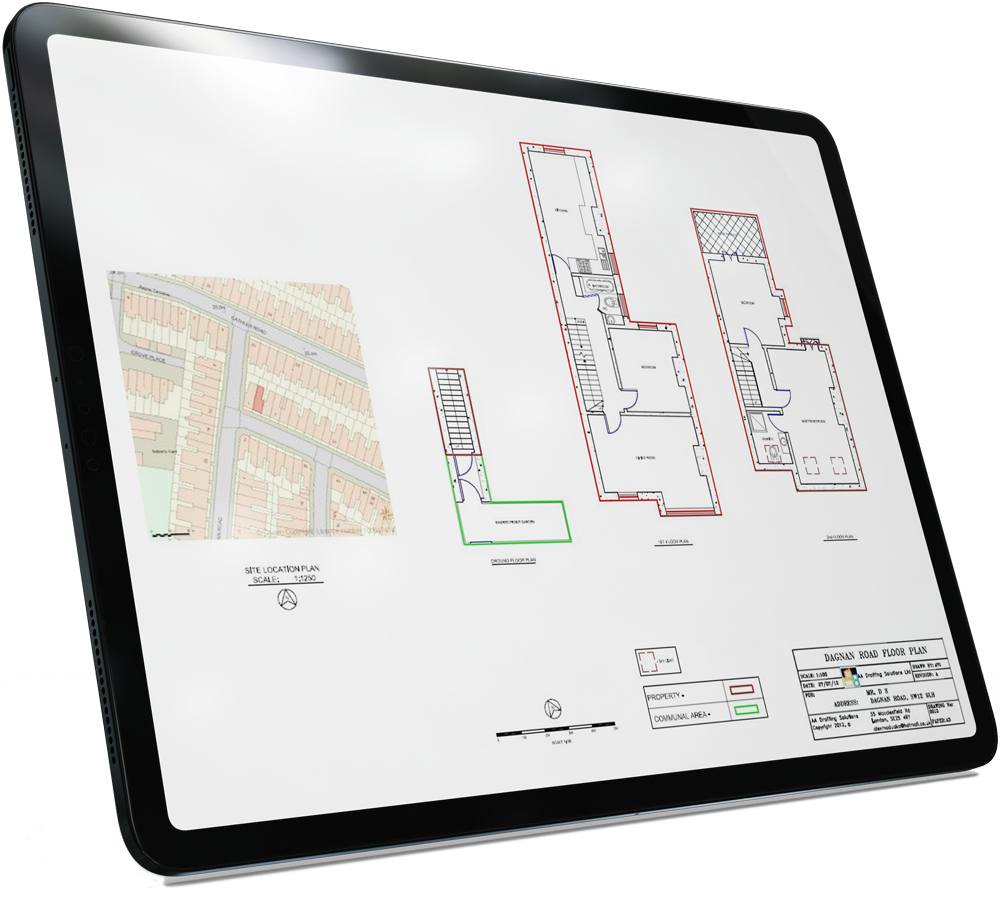
When dealing with property leases in the UK, particularly those over seven years, a Land Registry-compliant lease plan is not just a recommendation it’s a legal requirement. Whether you’re a landlord, solicitor, property developer or leaseholder, understanding how lease plans relate to planning permission and legal compliance is essential for a smooth property transaction.
In this guide, we’ll explore what a lease plan is, why it’s required by the Land Registry, how it intersects with planning permission, and how to ensure your plans are fully compliant.

What Is a Land Registry Lease Plan?
A lease plan is a scaled drawing submitted to the HM Land Registry to show the demised (leased) area of a property. It is typically required when:
- Registering a lease over 7 years
- Selling a leasehold property
- Changing the extent of a lease
- Making alterations to a property layout that affects legal boundaries
To be accepted by the Land Registry, lease plans must meet specific technical criteria, including scale (usually 1:100 for internal layout and 1:1250 for site plans), orientation, clearly outlined boundaries and a red line marking the demised premises.
Pro Tip: We always recommend commissioning lease plans from professionals who are experienced in Land Registry compliance. A minor discrepancy in scale, lack of a north point or missing dimensions can lead to application rejection and legal delays.

Land Registry Lease Plan Compliance: What You Need to Include
Creating a lease plan that meets Land Registry compliance standards is essential for registering leases over seven years or modifying leasehold boundaries. According to Land Registry Practice Guide 40 (supplement 2), all lease plans submitted must meet precise technical criteria to avoid rejection.
Here’s what your Land Registry lease plan must include:
1. Accurate Scale
The lease plan must be drawn to a recognised metric scale, commonly:
- 1:100 or 1:200 for internal layouts (flats, offices, units)
- 1:1250 or 1:2500 for location/site plans (context within surrounding area)
The scale must be clearly marked on the drawing and accurate enough for legal referencing.
Why it matters: An incorrect scale could result in legal boundary disputes or delays during registration.
2. Orientation – North Arrow
Every plan must indicate the direction of North to help Land Registry and legal professionals orient the property in relation to surrounding land and maps.
Common issue: Missing north arrows are one of the most cited reasons for plan rejections.
3. Demised Area Clearly Marked
The area being leased (the “demise”) must be clearly outlined in red, including all rooms, outbuildings, gardens or parking spaces that are part of the lease.
Best practice: Use bold, unbroken red lines with annotations where necessary (e.g., “private rear garden included in demise”).
4. Site Context and Surroundings
Your lease plan should include enough of the surrounding features, such as adjacent buildings, roads or communal entrances, to provide clear context.
Why this helps: It ensures the property can be located on an Ordnance Survey map and aligns with other planning or legal documents.
5. Shared Areas and Rights of Way
Mark shared access routes, communal corridors, driveways or bin stores in blue to differentiate them from the private demised space.
Planning alignment tip: These communal areas often overlap with planning applications or licensing for HMOS ensure consistency across all documentation.
6. Lease Term and Address Matching
The lease plan must include:
- The full postal address matches the lease deed
- Any unit number, floor level or block name as applicable
- The term of the lease or reference to the related title number
7. Digital Clarity and Line Weight
Plans must be:
- Digitally produced or professionally drafted
- With clear, consistent line weights
- Free of distortion or pixelation when printed or zoomed
AA Drafting Note: We often see plans rejected because of poor legibility — make sure your plan is easy to interpret in both print and digital formats.
8. Legal Precision for Multi-Unit Properties
For conversions, flat subdivisions, or HMO properties, lease plans must reflect:
- Internal room layout per unit
- Clearly divided boundaries between flats
- Precise allocation of shared amenities (kitchens, bathrooms, storage areas)
Important: Failure to delineate communal vs. private areas can lead to leasehold disputes, planning enforcement issues or complications in conveyancing.

How Lease Plans Tie into Planning Permission
You might assume that lease plans are only needed during the conveyancing process, but planning permission plays a vital role in ensuring your lease plan is valid. Here’s how:
- Change of Use: If a property is being converted (e.g. from commercial to residential use), you must first secure the appropriate planning permission.
- New Builds or Extensions: Any changes affecting the property footprint must match what was approved by your local council.
- HMO Conversions: If converting a home into a House in Multiple Occupation (HMO), the layout shown in the lease plan must reflect the council-approved scheme.
Why Non-Compliant Lease Plans Lead to Delays
Submitting an incorrect or outdated lease plan can cause:
- Rejection by HM Land Registry
- Solicitor requests for redraws
- Increased transaction costs
- Delays in completion or legal disputes
Many plans are rejected due to poor quality sketches, missing scale or inaccurate boundaries.
Reminder: Never use old marketing plans or floor plans from estate agents as lease plans. They lack the technical detail required and are unlikely to be Land Registry compliant.
Choosing a Lease Plan Provider: Why It Matters
Working with an experienced architectural firm like AA Drafting Solutions ensures:
- Accuracy and compliance with Land Registry standards
- Seamless coordination between planning permission and lease drawings
- Fast turnaround times and minimal risk of rejection
- Expert guidance on shared spaces and legal annotations
Final Thoughts: Get It Right the First Time
Staying compliant with Land Registry lease plan requirements and planning regulations is critical to avoiding costly delays, especially in property sales or lease transactions.
If you’re unsure about the process or need support navigating both planning and lease documentation, reach out to professionals who specialise in the full scope from design to legal compliance.
Need a Lease Plan?
AA Drafting Solutions offers Land Registry-compliant lease plans, fast delivery, and expert planning advice for residential and commercial properties across London.

Contact
Office Address
Opening Hours
Fri — 9am – 5pm
Sat — 9am – 2pm
Sun — Closed




